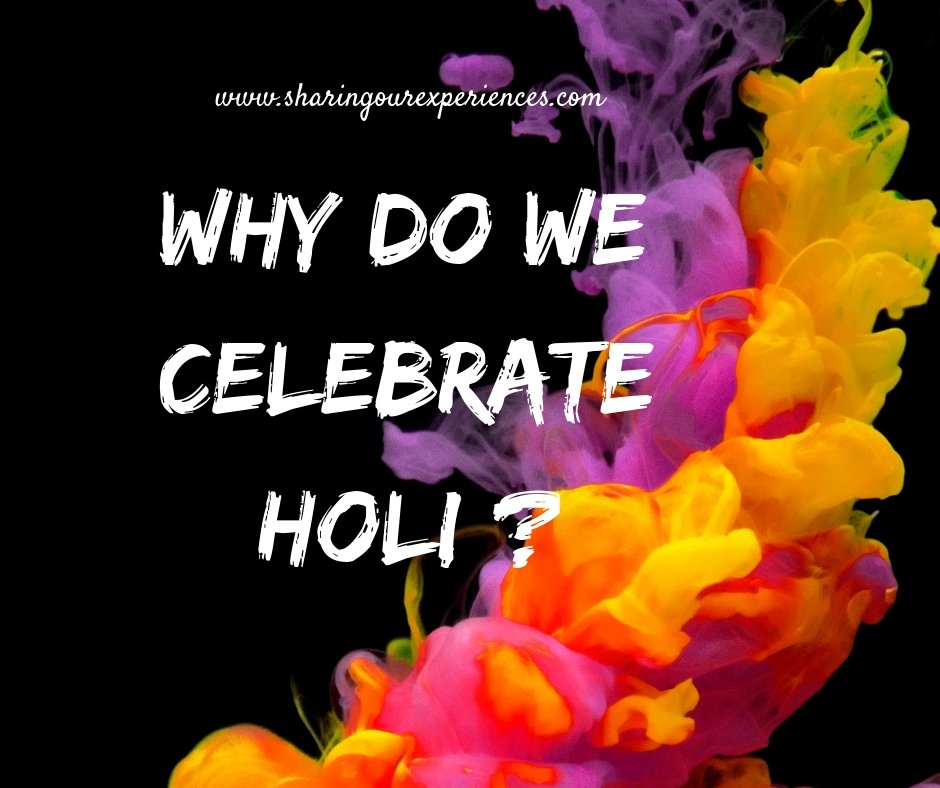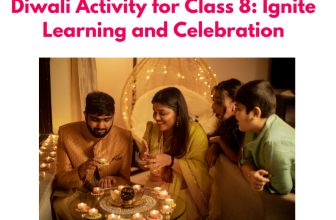
Why do we celebrate Holi and what are the various legends associated with the festival. Check out here why we celebrate Holi.
The most colorful festival celebrated in India is HOLI. This festival is the merger of vivacious colors and celebrations filled with joy that makes the day special. It is the festival to celebrate the victory of good over evil and make everyone understand the influence of good. From smearing colors on each other to enjoying delicious sweet such as Gujiyas together, the Holi festival is fun filled and joyous for all age group. Holi also signifies the arrival of spring season after winter. It is also celebrated to spread love and happiness and as thanksgiving for worthy harvest.
There are various legends associated with the celebration of Holi as festival differing from region to region.
What is Holi festival for kids?
Holi is a Hindu festival celebrated in India and other countries, and it is known as the “festival of colors” or the “festival of love.” It’s a time for kids and adults to have fun and celebrate the arrival of spring. People throw colored powders and water on each other, visit their friends and family, sing and dance, and enjoy delicious food. It’s a day to forget past grievances and make new beginnings, and to spread love, joy, and happiness. Kids especially love playing with the colorful powders and having water fights with their friends. It’s a time for kids to be happy, have fun, and make new memories with their loved ones.
Why do we celebrate Holi easy lines?
Holi is a Hindu festival that celebrates the arrival of spring and the triumph of good over evil. It is also known as the “Festival of Colors” and is celebrated by people throwing colored powder and water on each other, singing and dancing, and sharing sweets. The festival is a time for joy and forgiveness, and for coming together with friends and family to celebrate the start of a new season.
Why do we celebrate Holi in 10 lines?
- Holi is celebrated to mark the arrival of spring, which is a time of new beginnings and renewal.
- The festival is associated with the story of Lord Krishna and his consort Radha, who are said to have played with colored powders and water.
- Holi also celebrates the triumph of good over evil, with the festival’s origins tied to the Hindu legend of the demon king, Hiranyakashipu, who was defeated by Lord Vishnu.
- Holi is a time for forgiveness, where people put aside their differences and come together to celebrate love, friendship, and unity.
- The festival is also an opportunity to celebrate the victory of light over darkness, as well as the end of winter and the arrival of spring.
- Holi is a time for joy, laughter, and revelry, with people dancing, singing, and playing with colored powders and water.
- The festival brings people together, regardless of their religion, caste, or social status, promoting unity and love among all.
- Holi is also a time for feasting, with families and friends gathering to share food, sweets, and drinks.
- The festival has cultural significance, with different regions in India celebrating Holi in their own unique way, with local customs, rituals, and traditions.
- Holi is a celebration of life, and a reminder to appreciate the beauty and joy that surrounds us, and to live life to the fullest.
Why do we celebrate Holi?
Legend of Prahlada
According to one such ancient mythology is the legend of king Hiranyakashipu. A tribute to Lord Vishnu and his devotee Prahlada is the Holi celebration according to this legend. It goes like this: according to the Bhagvata Purana, king Hiranyakashipu was the king of demons, and was blessed with advantage that not animal nor human, neither inside nor outside, neither with any mad made weapon nor a projectile weapon, neither during the night nor the day and neither on land, water nor air. This blessing made the demon king arrogant and he ordered everyone to worship him as god and not even the gods were spared.
But his son Prahlada disobeyed his father and worshiped Lord Vishnu. This made his father very angry and he planned to kill his son Prahlada with the help of his sister Holikaa. Holikaa was immune to fire as a blessing from god. So, Holikaa tempted Prahlada to sit on her lap and then she set blazing fire. But, unbelievably prahlada came out of the fire unhurt whereas his aunt Holikaa was burnt to ashes as the blessing useless if it was to hurt someone. Since that day, during the Holi celebration, Holika Dahan is done by people mostly in the North India to celebrate the victory over evil by good.
Significance of Holi:
It is believed that Lord Vishnu, appeared in the form of Narashima- (neither human nor animal) half human and half lion, picked the egotistical demon king to the doorstep (neither outdoor nor indoor) and exterminated him with his claws (neither man-made nor launched weapon). From that day onward the festival of Holi celebration began to rejoice the triumph of good over evil.
Legend of Radha-Krishna:
Lord Krishna when young was very frisky and mischievous. As a child, Krishna was very envious that Radha has fair skin and was very dark. So one day he objected to his mother Yashoda about the nature’s injustice to him. The devoted mother Yashoda told the upset Krishna to colour Radha’s face with any colour he desired to calm him. In a playful mood, mischievous Krishna noted the mother’s words and smeared colour on Radha’s face, to make her look like him.
There is a legend that tells us why Krishna has dark skin. It is said that once demon tried to murder new-born Krishna by feeding him with venomous milk but Krishna was unharmed, instead that demon withered into ashes.
Significance of Holi:
In some way, the Lord Krishna’s prank of applying color on Radha and other gopi’s with water jets known as pichkaris become popular and gained recognition which is followed by the devotees as festival of colors. The Radha Krishna folktale is brilliantly celebrated by people all over India, especially in Vrindavan, Mathura, Barsana and Nandgaon- the places that relate with them.
Legend of Kamadeva
According to the legend, after Lord Shiva’s spouse Sati gave herself into fire as Daksha her father insulted Shiva and Lord Shiva was very unhappy. He relinquished all the worldly obligations and engrossed himself in deep mediation.
In the meantime, Parvati- daughter of mountains began mediation to please Lord Shiva as she wished to marry him. As Lord Shiva was not interested in any of the world’s affairs, things began to get complicated that made all gods worried and fearful. So to bring back Lord Shiva to his self, the gods reached the Lord Kaamadeva(the god of passion and love) for help. Lord Kaamadeva very well knew the adverse effect of the act, but he agreed to eject his arrow on Lord Shiva to save the world. Kaamadeva as per the plan shot an arrow of love on Lord Shiva while he was meditating. Lord Shiva was disturbed due to this and out of extreme anger opened his third eye and scorched Lord Kaamadeva into ashes. But, Kaamadeva’s arrow had dispersed the anticipated effect on Lord Shiva due to which he married Parvati.
Later, Rati- the wife of Kaamadeva prayed Lord Shiva and told that it was the idea of gods hence kindly recover her husband. Lord Shiva accepted her prayers and thus the event had joyous end.
Significance of Holi:
According to the belief Lord Shiva charred Kaamadeva on that day of Holi. In South India people worship the idol of Kaamadeva- god of love to pay respect for his life-threatening sacrifice on the day known as HOLI. Kaamadeva idol decorated with sugarcane as bow and the string line of humming bee and his shaft of arrow crowned with passion that prick the heart. People offer mango buds to the deity that he loved and also the sandalwood paste as coolant for his burns.
In other part of South India like Tamil Nadu, Holi is celebrated by three diverse names- Kaman Pandigai, Kamavilas and Kama Dahanam.
In Maharashtra, the festival signifies Matki Phod(breaking the pot filled with buttermilk). Group of Men make human pyramid by stand on top of each other to reach the pot hung with buttermilk. The person who hits the earthen pot is termed as the Holi king of that year.
In Punjab region, Sikhs celebrate with colors on Hola Mohalla, and it is rejoiced on the next day of Holi.
In Virndavan, alienated women and widows engross themselves in Holi colours.
Thus the traditions and rituals differ from one region to another but all are united by the essence of this colorful festival.
What is Holi in simple words?
Holi is a Hindu festival that is celebrated annually in India and other countries. It is commonly referred to as the “festival of colors” and is celebrated by people throwing colored powder and water on each other. The festival marks the arrival of spring, and is a time for renewal, forgiveness, and coming together with family and friends. Holi has both religious and cultural significance and is associated with the triumph of good over evil, as well as the celebration of love and friendship.
5 lines on Holi in English
- Holi is a Hindu festival that is celebrated annually to mark the arrival of spring.
- Holi is commonly known as the “festival of colors” as people throw colored powder and water on each other to celebrate.
- The festival is celebrated on the full moon day in the Hindu month of Phalguna and lasts for two days.
- Holi has both religious and cultural significance, and is associated with the triumph of good over evil, as well as the celebration of love and friendship.
- Eco-friendly Holi celebrations are becoming more popular as people opt for natural colors made from flowers and herbs instead of synthetic ones, to reduce their impact on the environment.
5 lines on Holi in English for Class 1
- Holi is a special festival that we celebrate every year.
- During Holi, we throw colorful powder and water on each other to have fun.
- Holi is a time to be happy and play with friends and family.
- We also eat yummy food and sweets during Holi.
- Holi is a time to spread love, joy, and friendship to everyone around us.
5 lines on Holi in English for Class 2
- Holi is a Hindu festival that is celebrated annually.
- People throw colored powder and water on each other to celebrate the festival.
- Holi is also a time for forgiveness, where people put aside their differences and come together to celebrate love, friendship, and unity.
- The festival has both religious and cultural significance, and is associated with the triumph of good over evil.
- Holi is a time to spread joy and happiness and to create happy memories with our loved ones.
5 lines on Holi in English for Class 3
- Holi is a popular festival celebrated by Hindus all over the world.
- People throw colored powders and water on each other, sing, dance and enjoy delicious food.
- Holi is a celebration of spring, new beginnings, and the victory of good over evil.
- Holi is a time for forgiveness, and for coming together with friends and family to create happy memories.
- Eco-friendly Holi celebrations are becoming more popular as people opt for natural colors made from flowers and herbs instead of synthetic ones, to reduce their impact on the environment.
5 lines on Holi in English for Class 4
- Holi is a Hindu festival that is celebrated with great joy and enthusiasm.
- During Holi, people gather with friends and family to play with colored powders, sing and dance.
- Holi is a celebration of the arrival of spring, the triumph of good over evil, and the bond of love and friendship.
- People exchange sweets and gifts and visit their friends and loved ones to wish them a happy Holi.
- Holi also has a strong cultural significance, with different regions in India celebrating Holi in their own unique way, with local customs, rituals, and traditions.
10 Lines on Holi in English
- Holi is a Hindu festival celebrated in India and other countries.
- Holi is known as the festival of colors and is celebrated on the full moon day in the Hindu month of Phalguna.
- During Holi, people play with colored powders and water, dance, and sing to celebrate the arrival of spring.
- Holi is a celebration of love, friendship, and the triumph of good over evil.
- The origins of Holi can be traced back to ancient Hindu mythology, where it is associated with the story of Lord Krishna and his consort, Radha.
- Holi is also associated with Hindu legends and the defeat of the demon king, Hiranyakashipu, by Lord Vishnu.
- Holi is a time for forgiveness, renewal, and coming together with family and friends.
- In recent years, Holi has become a global celebration, with people of all cultures and religions joining in the festivities.
- Eco-friendly Holi celebrations have become popular, with people opting for natural colors made from flowers and herbs instead of synthetic ones.
- Holi is a vibrant and joyful celebration that brings people together and promotes unity and love.
10 Lines on Holi festival in English for Class 1
- Holi is a very special festival that we celebrate every year.
- During Holi, people throw colored powder and water on each other.
- Holi is also a time to eat delicious food and sweets.
- We play with friends and family, sing and dance, and have lots of fun.
- Holi is a time to spread love, joy, and happiness to everyone around us.
- Holi is a celebration of spring, new beginnings, and the victory of good over evil.
- People visit their friends and loved ones to wish them a happy Holi.
- Holi has both religious and cultural significance, and is associated with Hindu mythology.
- In some regions, people also light bonfires, sing and dance around them, and make offerings to the gods.
- Eco-friendly Holi celebrations are becoming more popular, with people opting for natural colors made from flowers and herbs, instead of synthetic ones, to reduce their impact on the environment.
10 Lines on Holi festival in English for Class 2
- During Holi, people throw colored powder and water on each other and have fun.
- Holi is a celebration of spring, new beginnings, and the victory of good over evil.
- People also visit their friends and loved ones to wish them a happy Holi and exchange sweets and gifts.
- Holi has a strong cultural significance, with different regions in India celebrating Holi in their own unique way.
- Holi is a time for forgiveness, and for coming together with friends and family to create happy memories.
- People sing, dance, and play musical instruments to celebrate the festival.
- Holi is associated with Hindu mythology, and is believed to have originated as a harvest festival.
- In some regions, people light bonfires and make offerings to the gods to mark the start of the festival.
- Eco-friendly Holi celebrations are becoming increasingly popular as people opt for natural colors made from flowers and herbs, instead of synthetic ones, to reduce their impact on the environment.
10 Lines on Holi festival in English for Class 3
- Holi is a Hindu festival that is celebrated every year with great joy and excitement.
- It is also known as the “festival of colors” because people throw colored powder and water on each other.
- Holi is a celebration of spring, new beginnings, and the victory of good over evil.
- It is also a time for forgiveness, and for coming together with friends and family to create happy memories.
- Holi has a strong cultural significance, and different regions in India celebrate Holi in their own unique way.
- People visit their friends and loved ones, exchange sweets and gifts, and sing and dance together to celebrate the festival.
- Holi is associated with Hindu mythology, and is believed to have originated as a harvest festival.
- In some regions, people light bonfires, sing and dance around them, and make offerings to the gods.
- Eco-friendly Holi celebrations are becoming increasingly popular, as people opt for natural colors made from flowers and herbs, instead of synthetic ones, to reduce their impact on the environment.
- Holi is a time for spreading love, joy, and happiness, and for creating positive memories with friends and family.
10 Lines on Holi festival in English for Class 4
- Holi is a Hindu festival celebrated in India and other countries.
- It is also known as the “festival of colors” or the “festival of love”.
- Holi is celebrated on the full moon day in the Hindu month of Phalguna (February-March).
- On this day, people throw colored powders and water on each other to celebrate.
- Holi symbolizes the victory of good over evil and the arrival of spring.
- People visit their friends and family, sing and dance, and enjoy delicious food.
- Holi is a time to forget past grievances and make new beginnings.
- The festival also has a religious significance and involves the burning of a bonfire.
- Holi is a national holiday in India and is celebrated with great joy and enthusiasm.
- It is a time to spread love, joy, and happiness, and bring people together.
10 Points on Holi in English for Class 5 and Class 6
- Holi is a Hindu festival celebrated annually.
- It is also known as the “Festival of Colors” or the “Festival of Love”.
- Holi is celebrated in India and Nepal, usually in the month of March.
- The festival marks the arrival of spring and the end of winter.
- Holi is celebrated by throwing colored powder and water on each other, singing and dancing.
- People also light bonfires, called Holika Dahan, to symbolize the victory of good over evil.
- The festival is a time for joy, forgiveness, and coming together with friends and family.
- Holi is a time to forget past grievances and start anew.
- People prepare sweets and special dishes for the festival, such as gujiya and mathri.
- Holi is considered one of the most important Hindu festivals and is enjoyed by people of all ages.
Holi par short essay / 10 lines for Class 7 and Class 8
Here is a short essay on Holi in 10 lines for Class 7 and Class 8 students:
- Holi is a Hindu festival celebrated with great zeal and enthusiasm every year.
- It is also known as the “Festival of Colors” or the “Festival of Love”.
- Holi is celebrated in the month of March, marking the arrival of spring and the end of winter.
- People throw colored powder and water on each other, sing and dance, and exchange sweets.
- Holika Dahan, the lighting of bonfires, is an important part of Holi celebrations.
- It symbolizes the victory of good over evil and is celebrated with prayers and rituals.
- Holi is a time for joy, forgiveness, and coming together with friends and family.
- People forget past grievances and start anew, spreading love and happiness.
- Traditional sweets such as gujiya and mathri are prepared and enjoyed during Holi.
- Holi is considered one of the most important Hindu festivals, celebrated not just in India but all over the world.
Holi essay in English 20 lines
Holi is one of the most vibrant and joyous festivals in India and is celebrated with great enthusiasm and excitement. The festival, also known as the “festival of colors” or the “festival of love,” is observed on the full moon day in the Hindu month of Phalguna (February-March).
Holi symbolizes the victory of good over evil and the arrival of spring. It is a time to forget past grievances and make new beginnings. People visit their friends and family, sing and dance, and enjoy delicious food. The festival is also marked by the burning of a bonfire, which has a religious significance and is believed to represent the burning of the evil spirit Holika.
One of the most unique and exciting aspects of Holi is the tradition of throwing colored powders and water on each other. People of all ages, from kids to adults, participate in this fun activity, creating a rainbow of colors in the streets. The colors used during Holi represent the colors of spring and the arrival of new life.
Holi is a time for people to come together and celebrate love, unity, and happiness. It is a day for families and friends to put aside their differences and bond over laughter and fun. People exchange sweets, hug each other, and wish each other well.
In conclusion, Holi is more than just a festival, it is a celebration of life, love, and the human spirit. The festival brings people together and spreads joy, happiness, and peace. It is a time to forget the past and embrace the present, to let go of negative thoughts and focus on the positive. Holi is a reminder that no matter what, life goes on and it is always possible to start over with a smile and a new beginning.
If you liked this article on Why do we celebrate Holi? Don’t forget to Pin it
[pinterest-image message=”Why do we celebrate Holi and what are the various legends associated with the festival. Check out here why we celebrate Holi in India. There are various myths associate with Holi across India #Holi #Festival #Colours #India #Festivals #Myths #holi #Story #Books #Kids #Parenting #” custom_image=”https://www.sharingourexperiences.com/wp-content/uploads/2019/02/Why-do-we-celebrate-holi_pin.jpg”]
Liked this post ?
You may also want to read
How to celebrate Eco friendly Holi
In case if you liked this article on Why do we celebrate Holi? and think it may help someone do show your support by sharing this article.
Did you like these guide on Why do we celebrate Holi? Do let us know using comments below and if you have any more questions or something to add please do let me know. Would love to hear from you.







